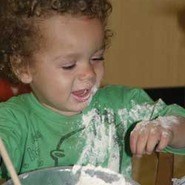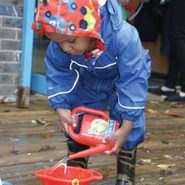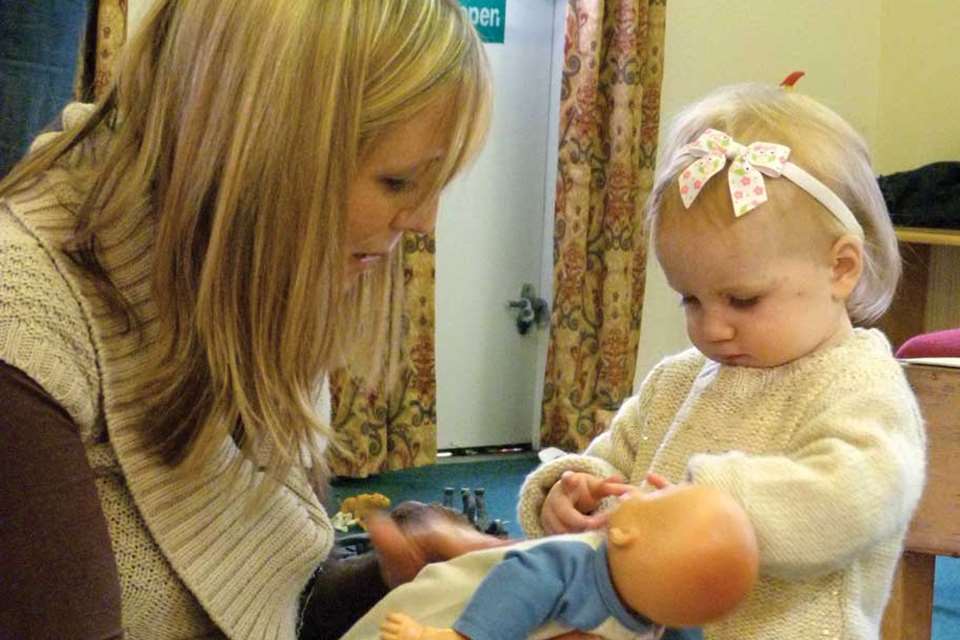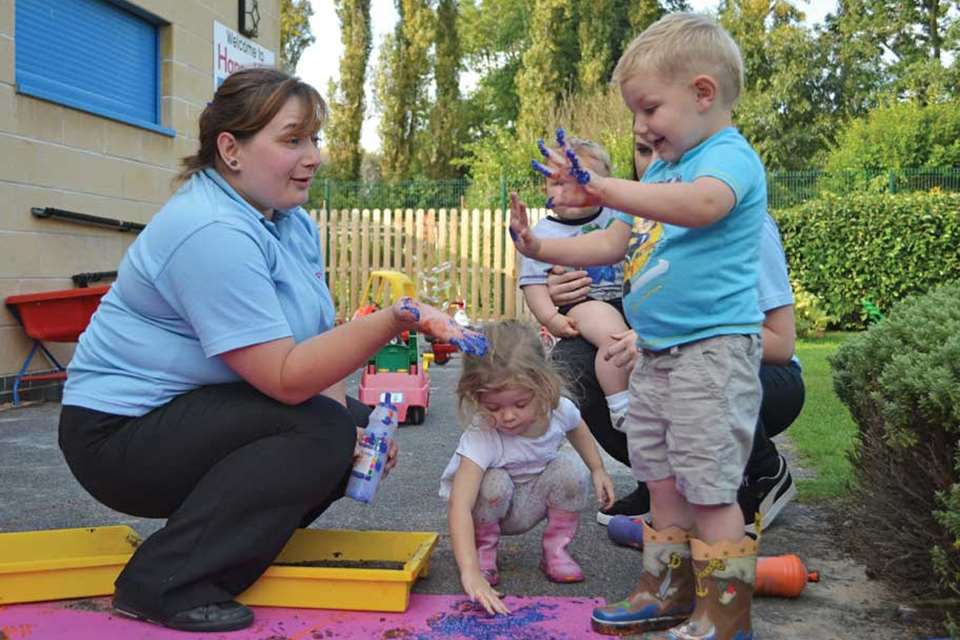Learning & Development: Two-year-olds - Touch base
Ruth Thomson
Monday, November 17, 2014
In an extract from a briefing on including two-year-olds in schools, Julian Grenier and Helen Moylett look at some of the key areas that leaders should consider to ensure they are meeting children's needs.

As a growing evidence base demonstrates, what really matters in early years education is not the type of setting but its quality, which is principally determined by the knowledge and qualifications of the workforce.
We know that graduateand teacher-led settings are more effective in closing the attainment gap (Mathers et al, 2014). Children from disadvantaged areas also benefit more from being in a good social mix. Schools are certainly not the only organisations that can provide this type of high-quality early education and care, but they are well-placed to do so. To determine whether your school is the right environment for two-year-old provision, ask yourself:
- - Will you be fulfilling a need for high-quality provision for two-year-olds in the local area?
- - Can you provide a social mix, for example by offering paid-for places alongside the free entitlement for disadvantaged children?
- - What expertise do you have within your current early years team? What additional development needs will your staff have? What additional staffing will you need?
- - Do you have suitable space, indoors and out, and funding for creating a suitable environment?
- - How does the financial plan stack up between your capacity, likely demand and funding levels?
This briefing is intended to give senior leaders in schools a concise summary of some of the key aspects of evidence-based practice, with suggestions for useful further reading and support.
'TERRIBLE TWOS'?
Two-year-olds are sometimes known as the 'terrible twos' and told off for not being able to share and 'play nicely'. However, these perceived ills are part of their developmental stage and the fact that these children are at least a year younger than those with whom many nursery staff usually work is significant. Although twos will learn from - and often enjoy the company of - older children, they tend to behave differently as they are still developing some of the skills that most three- and four-year-olds have already mastered to some extent.
For instance, they live in the moment and are impulsive. 'I see, I want, I take' is often how they operate. This is developmental, and although they need to learn to share and take turns, this is a gradual process and it is inappropriate to expect high levels of compliance and empathy with others. It is better to ensure that there are plenty of open-ended resources that twos can use without constantly being expected to share.
They also have different needs - some of which are basic and physical, such as needing naps and still being in nappies. So even if you include your twos in mixed age groups you will need to ensure that they are not just coping with three- to four-year-old provision, but have some special time and provision of their own.
EMOTIONAL WELL-BEING
 Children with strong attachments use these relationships as secure bases from which to explore the world and show distress when parted from their attachment figures. For those twos who have never been to a setting before this may be acutely upsetting both for them and their parents, but can be helped greatly by an effective key person system.
Children with strong attachments use these relationships as secure bases from which to explore the world and show distress when parted from their attachment figures. For those twos who have never been to a setting before this may be acutely upsetting both for them and their parents, but can be helped greatly by an effective key person system.
Building a relationship with the parent as well as each unique child is important and however you manage the process, it needs thoughtful planning, quality time and sensitive and responsive effort.
Secure attachment promotes brain development and underpins secure language development as well as physical and emotional health, so it is a worthwhile investment to make sure the transition into the setting is well managed and that every member of staff who is a key person is well-supported during the process.
HOME LEARNING
The key person relationship is a triangular one involving child, key person and parent. It is a crucial relationship in the context of two-year-olds: 'after the age of three it becomes much more difficult to make changes in both a child's development and in parental behaviour' (DfE/DH, 2011).
Research by Sylva et al (2010) identified the elements of a positive home learning environment:
- - Warm, loving relationship building.
- - Providing opportunities to explore.
- - Being child-focused and child-led.
- - Developing communication, language and literacy.
These are also elements of a positive setting environment. When working with vulnerable twos it is important to share skills and knowledge with parents in ways that are respectful and support them to recognise their own children as powerful learners and themselves as key players in their child's development and learning.
SELF-REGULATION: EMOTIONAL AND COGNITIVE
 The key person relationship promotes emotional well-being and helps children learn how to regulate their feelings and manage their behaviour. This is all part of Personal, Social and Emotional Development (PSED) and underpins learning. When children have a secure base and feel good about themselves they are also more easily able to regulate their own thinking and learning through the characteristics of effective early learning.
The key person relationship promotes emotional well-being and helps children learn how to regulate their feelings and manage their behaviour. This is all part of Personal, Social and Emotional Development (PSED) and underpins learning. When children have a secure base and feel good about themselves they are also more easily able to regulate their own thinking and learning through the characteristics of effective early learning.
It is through playing and exploring that children engage with the world. Active learning is all about being a motivated learner able to persist in achieving one's own goals, and creating and thinking critically is where we use imagination, make links and try out strategies to become more skilled thinkers.
Two-year-olds learn best when they are following their own interests and process is much more important to them than product, so most of the provision for their play, both indoors and outdoors, should support child-initiated activity. It is not appropriate for adults to plan activities that two-year-olds are then forced to complete.
Language helps us to think and adults have a crucial role to play in supporting language learning by understanding how communication and language develops and monitoring each child's progress in understanding, listening and attention and speaking. Most importantly, they need to be good listeners, picking up on each child's interests and extending children's language and thinking by modelling relevant and correct language just beyond the child's current stage of development.
Communication and Language and PSED underpin and are influenced by Physical Development. Brain and body develop together and movement is really important for twos as they learn to move and co-ordinate their bodies as well as learning about the world through movement. A good play area for twos has lots of open space indoors and outdoors and offers different levels and varieties of surfaces with a wide range of materials to investigate. If tables and chairs are the first thing you notice when you enter an indoor space then it is not appropriate for twos. Community Playthings suggests that the best settings provide a dependable and flexible environment that supports play and is:
- - a place to be active
- - a place to relax
- - a place for tactile exploration
- - a place for imagination.
BEHAVIOUR AND SCHEMAS
Twos are programmed to learn about themselves, other people and how social rules work. Trying as a two-year-old to be competent means we want to repeat things - 'again' is often a favourite word. This is because our brain needs the repetition to build up understanding and develop concepts. These repeated patterns of behaviour are often known as schemas. Here are some common schemas.
- - Trajectory Throwing items in various directions, climbing up and jumping off.
- - Enveloping Wrapping self in a blanket, covering whole painting with one colour, putting notes in envelopes to post
- - Enclosure Filling and emptying containers, climbing into boxes, making dens.
- - Transporting Carrying small items around in bags and buckets, pushing other children and objects round in prams and pushchairs.
- - Rotation Rolling and being spun round, playing with wheeled toys.
Children may be working with more than one schema at a time and seem driven to repeat their interest over and over again. This can be quite challenging for practitioners, but the more children are encouraged to follow their own interests, the more deep-level learning is likely to occur.
Two-year-olds not only want to be competent; they want to have autonomy - to be able to do things on their own. The skilled practitioner will give them choice so they feel in control.
TRAINING AND DEVELOPMENT
It is now very well-evidenced that early years provision that is teacheror graduate-led is the most effective. Significantly, the EPPSE research also found that staff with lower levels of qualification worked most effectively when they were led by a graduate or teacher. Qualified teachers will only be trained to work with two-year-olds if they have an additional qualification such as Early Years Professional Status or Early Years Teacher Status.
The minimum level of qualification recommended in the recent Nutbrown Review is a Level 3 award. In all cases, qualifications should be seen as a starting point for a person's professional development. The EYFS statutory framework also requires all settings to offer staff regular supervision, which 'provides support, coaching and training for the practitioner and promotes the interest of children'.
Two-year-olds can present with very powerful emotions and working with their families can present complex challenges, so regular, planned supervision is essential.
MORE INFORMATION
This is an edited extract from 'Including two-year-olds in schools: a briefing for school leaders', published by Early Education and Nursery World.
Julian Grenier is national chair and Helen Moylett is president of Early Education. See www.early-education.org.uk for more information.








